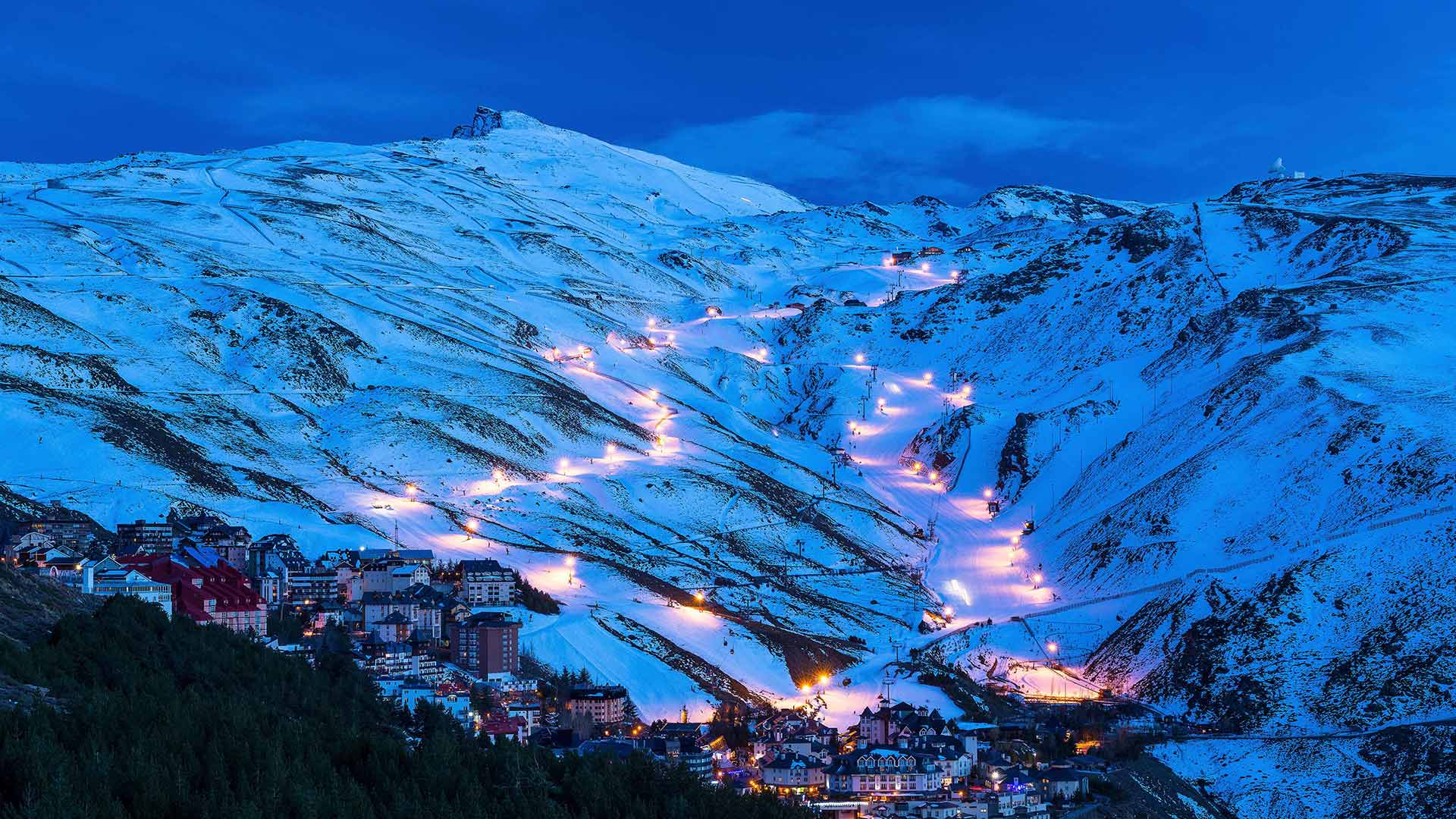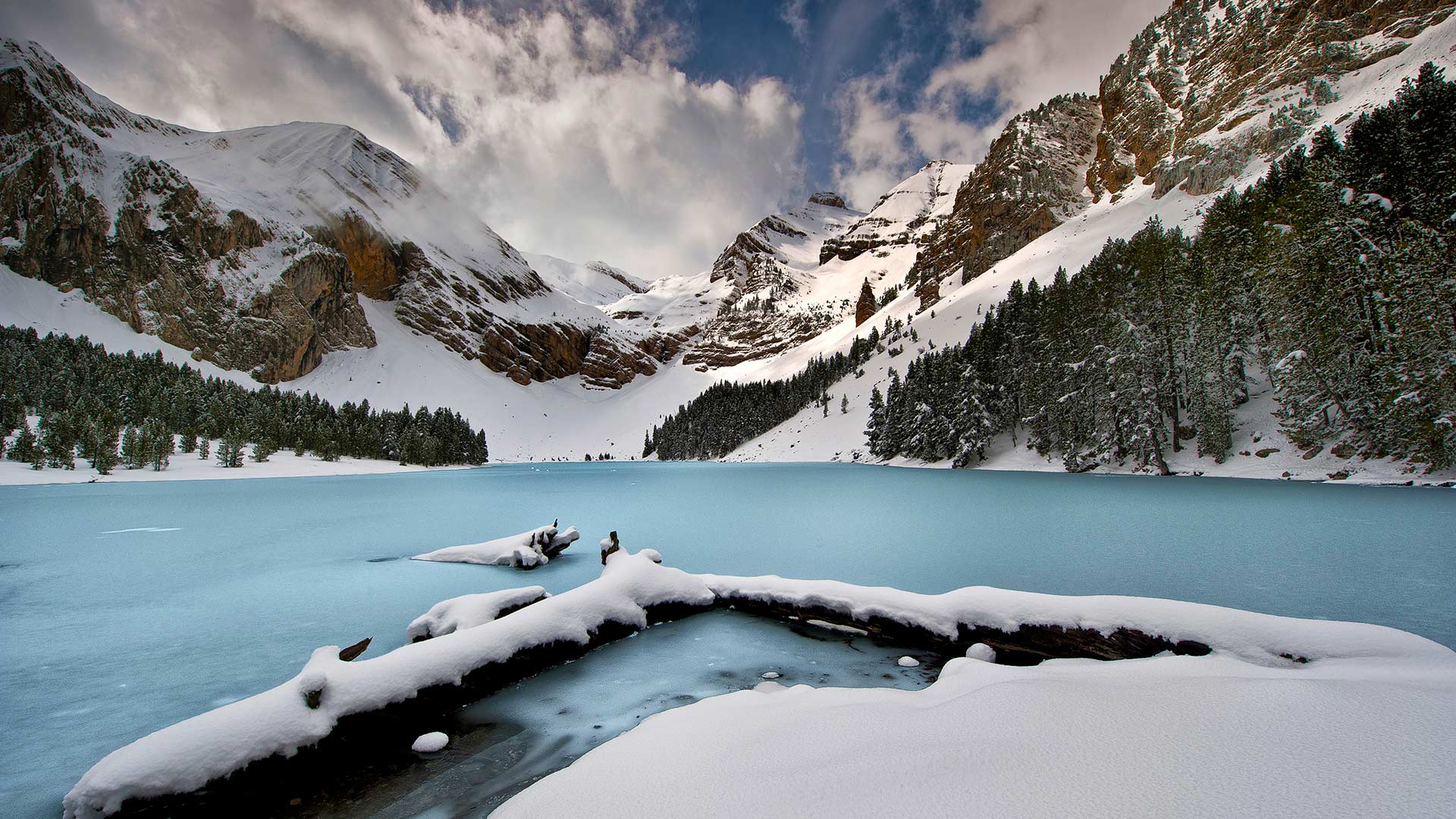日落后的托莱多全景,西班牙 Panoramic view of the city of Toledo after sunset, Spain (© Frank Fischbach/Alamy)
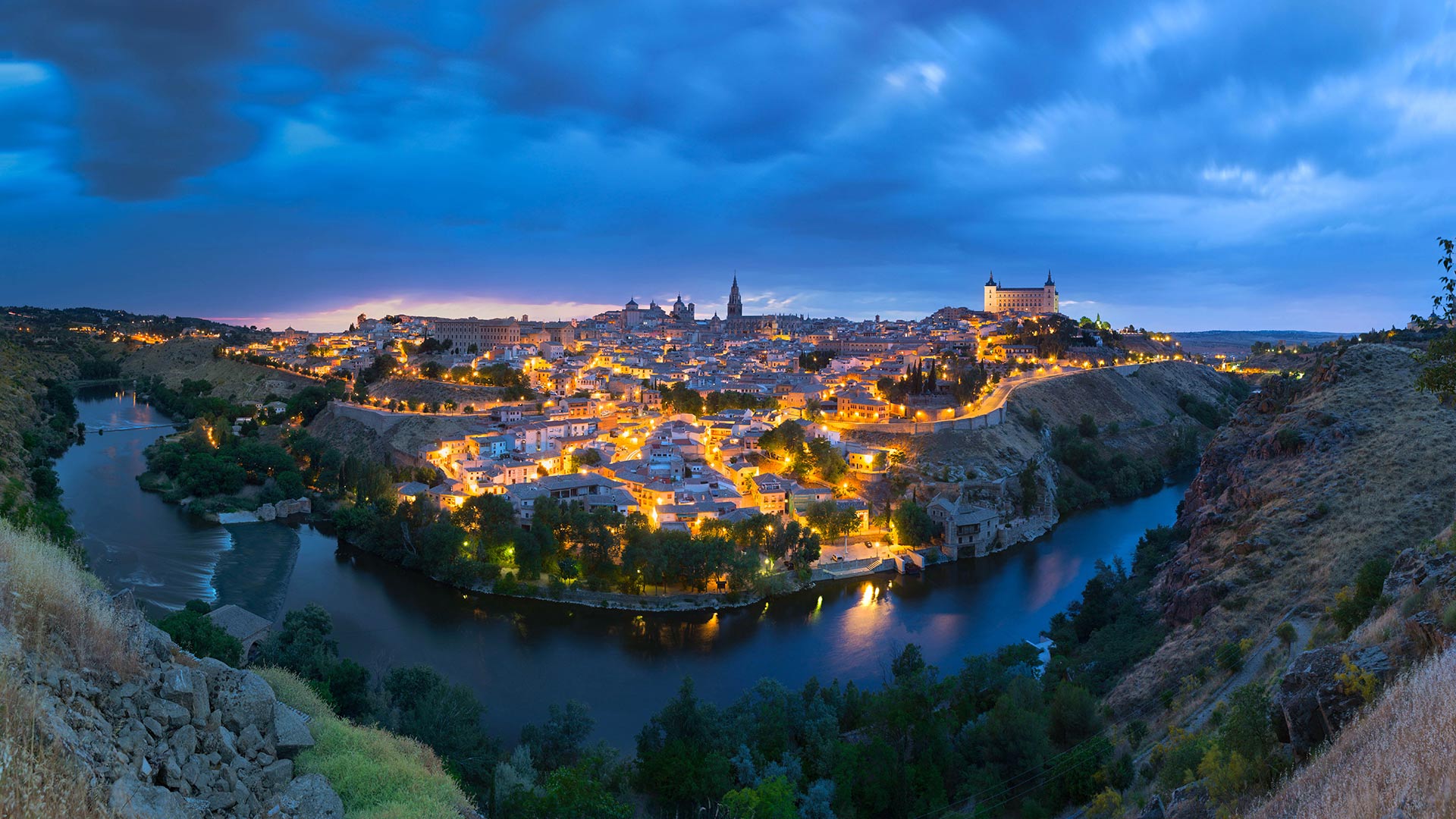
日落后的托莱多全景,西班牙 Panoramic view of the city of Toledo after sunset, Spain (© Frank Fischbach/Alamy)
Desde la otra orilla del Tajo
The image that we offer you today is the panoramic view of the old town that can be seen from the viewpoint of the Valley, on the other bank of the Tagus. To the right is the Alcázar, one of the most representative buildings in the city, with the Gothic cathedral of Santa María looming on its left. And a little further on, the Jewish quarter, where among other outstanding buildings you can find El Greco's house.
从塔霍河的另一岸
我们今天提供的图像是老城区的全景,可以从山谷的视角,在塔古斯的另一边看到。右边是阿尔卡扎尔,是城市中最具代表性的建筑之一,左边是圣玛丽亚哥特式大教堂。再远一点,犹太区,在那里,除了其他优秀的建筑,你可以找到埃尔格雷科的房子。
Pradollano滑雪站,西班牙内华达山脉国家公园 (© NTCo/iStock/Getty Images Plus)
跨年庆典中燃放的烟花,西班牙萨拉戈萨 Fireworks during a New Year's Eve celebration in Zaragoza, Spain (© Martina Badini/Shutterstock)
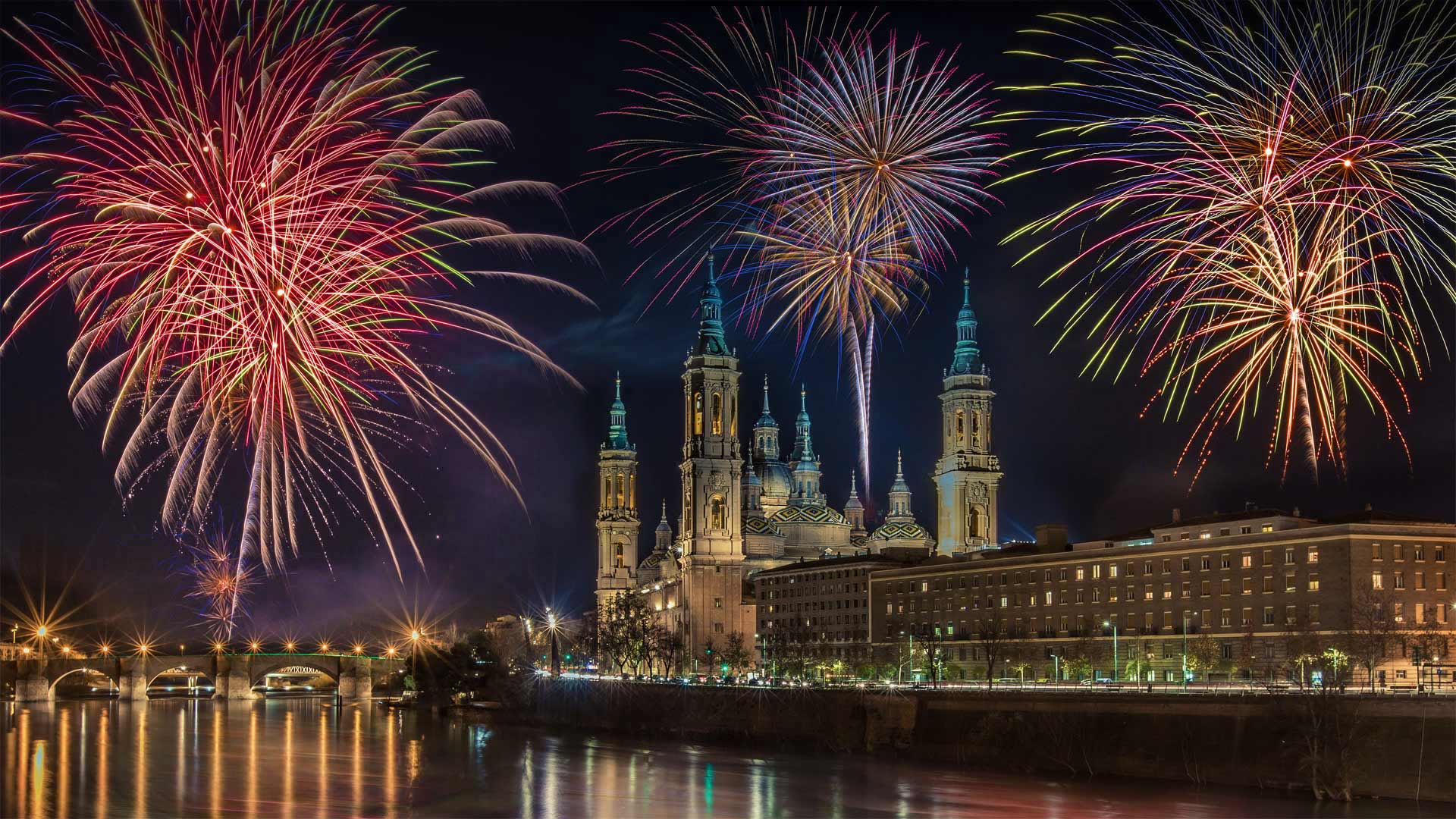
跨年庆典中燃放的烟花,西班牙萨拉戈萨 Fireworks during a New Year's Eve celebration in Zaragoza, Spain (© Martina Badini/Shutterstock)
Goodbye, 2020!
New Year's Eve celebrations around the world will look a lot different this year, but as we ring in 2021 (and bid good riddance to 2020?) we can still enjoy this view of fireworks from a previous year in, Spain. The cathedral in the background is the Basílica de Nuestra Señora del Pilar, which was constructed over centuries beginning in 1681, though several churches had been built on the site prior to that. On the left is the Puente de Piedra Bridge, which spans the Ebro River. It's also known as the Bridge of Lions because statues of lions (symbols of the city) stand at each end of the bridge. Zaragoza is famous for its landmarks and architecture, as well as for local cuisine, and seasonal festivals—which we can only hope return soon.
再见,2020!
今年世界各地的除夕庆祝活动看起来会有很大的不同,但当我们在2021年敲响新年的钟声时(并祝我们在2020年摆脱困境?)我们仍然可以欣赏到前一年在西班牙的烟花。背景中的大教堂是Basílica de Nuestra Señora del Pilar大教堂,这座教堂从1681年开始修建了几个世纪,尽管在此之前已经有几座教堂在此修建。左边是普恩特德皮埃德拉大桥,横跨埃布罗河。它也被称为狮子桥,因为狮子雕像(城市的象征)矗立在桥的两端。萨拉戈萨以其地标和建筑,以及当地美食和季节性节日而闻名,我们只能希望这些节日很快回归。
比利牛斯山脉中的高山湖Ibón de Plan,西班牙韦斯卡 (© Getty Images)
贝纳斯克,西班牙韦斯卡 The village of Benasque, Huesca, Spain (© Miscelleneoustock/Alamy)
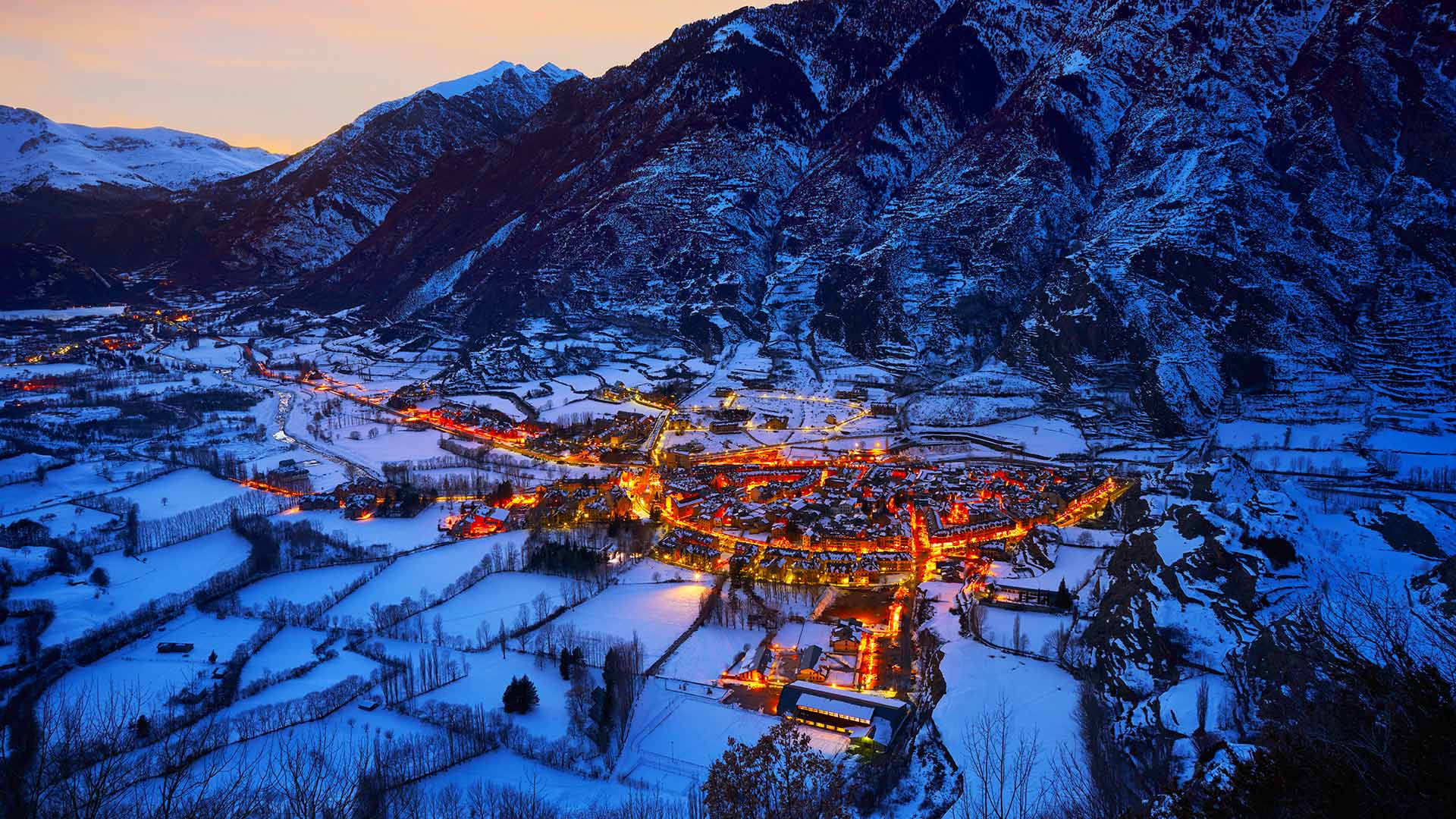
贝纳斯克,西班牙韦斯卡 The village of Benasque, Huesca, Spain (© Miscelleneoustock/Alamy)
A cozy winter village
When snow blankets the steep slopes of the Pyrenees—the mountain range that forms a natural border between Spain and France—the cozy Spanish village of Benasque offers a cheerful refuge on a winter's eve. Beautifully preserved Romanesque and Renaissance manors and churches line the narrow cobblestone streets, and it's easy to feel as though you've stepped back in time. Aside from these cultural charms, most visitors come to Benasque for outdoor adventure. Surrounded by the highest peaks of the Pyrenees, the Benasque Valley receives heavy snowfall and is a popular skiing destination. Summer attracts even more visitors to the area, when hiking, mountain biking, paragliding, and river rafting are big draws.
一个舒适的冬季村庄
当积雪覆盖比利牛斯山脉的陡峭山坡时(该山脉是西班牙和法国之间的天然边界),舒适的西班牙村庄贝纳斯克(Benasque)在冬天的前夜提供了一个避风港。 保存完好的罗马式和文艺复兴时期的庄园和教堂排在狭窄的鹅卵石街道上,让您有种时光倒流的感觉。 除了这些文化魅力外,大多数游客都来贝纳斯克(Benasque)进行户外探险。 贝纳斯克山谷被比利牛斯山脉的最高峰所环绕,下大雪,是一个受欢迎的滑雪胜地。 夏天是徒步旅行,山地自行车,滑翔伞和漂流的热门之地,吸引了更多的游客前往该地区。
杜拉通河谷中的Nuestra Señora de la Hoz老修道院,西班牙塞哥维亚 Nuestra Señora de la Hoz, an old monastery in the Duratón River gorge, Segovia, Castile and León, Spain (© Arco Images GmbH/Alamy)
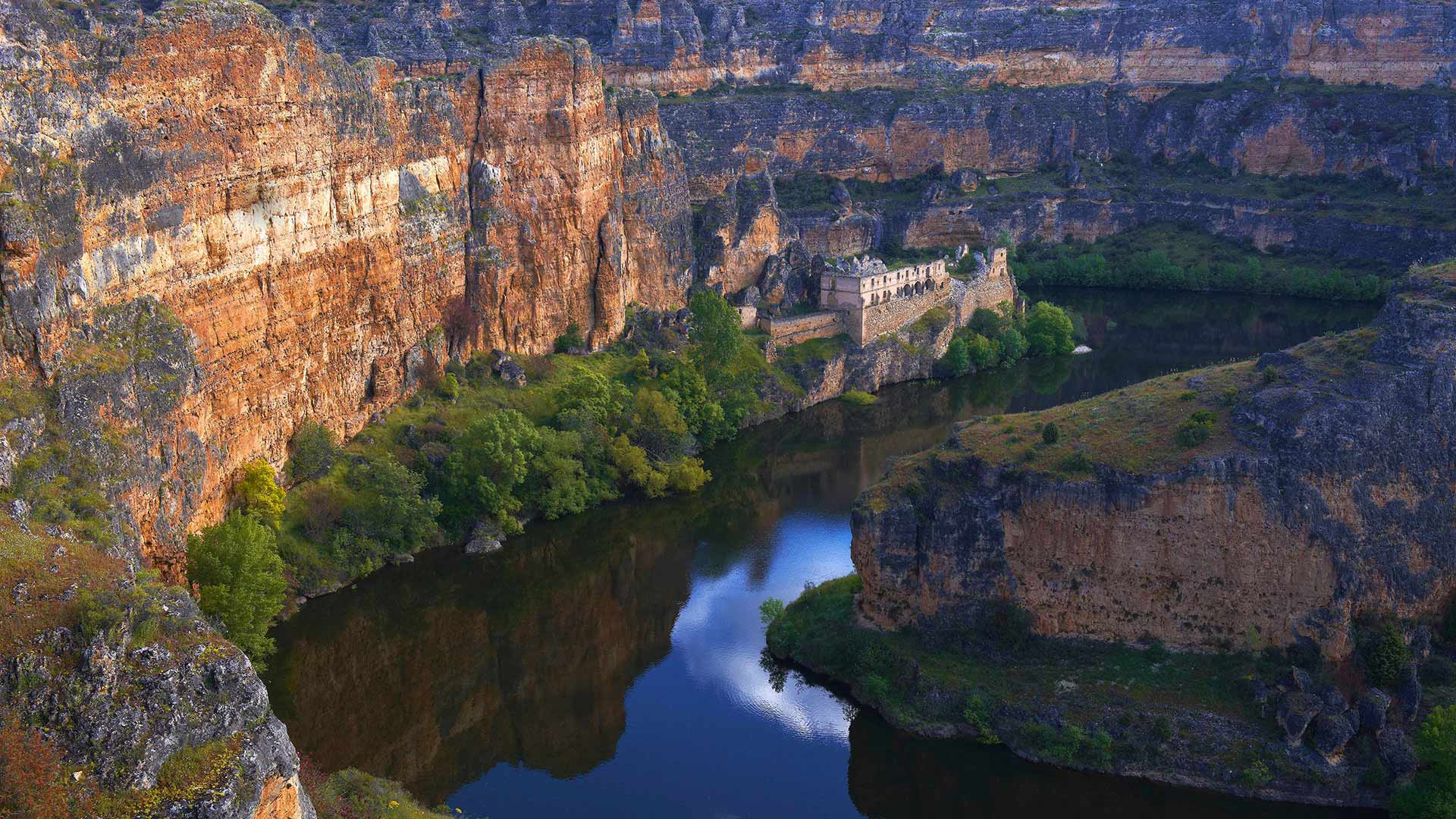
杜拉通河谷中的Nuestra Señora de la Hoz老修道院,西班牙塞哥维亚 Nuestra Señora de la Hoz, an old monastery in the Duratón River gorge, Segovia, Castile and León, Spain (© Arco Images GmbH/Alamy)
A gorge-ous spot for a monastery
Lace up your walking shoes and let’s head into the Hoces del Rio Duratón, in the Spanish region of Castile and León. This imposing 17-mile-long limestone gorge boasts towering vertical walls that can reach up to 100 metres high. The Duratón river which carved it meanders through a landscape rich in history and archaeological treasures.
Inside the cliffs are several caves with ancient paintings dating back to the Bronze Age, and a dark Visigothic grotto which is thought to be the first Christian temple in the region. Above one of the bends in the canyon sits a 12th century Romanesque church, just a few miles away from the ruins of the long-abandoned and isolated Franciscan monastery you see in our homepage image.
阿尔瓦拉辛,西班牙 Albarracín, Spain (© Domingo Leiva/Getty Images)
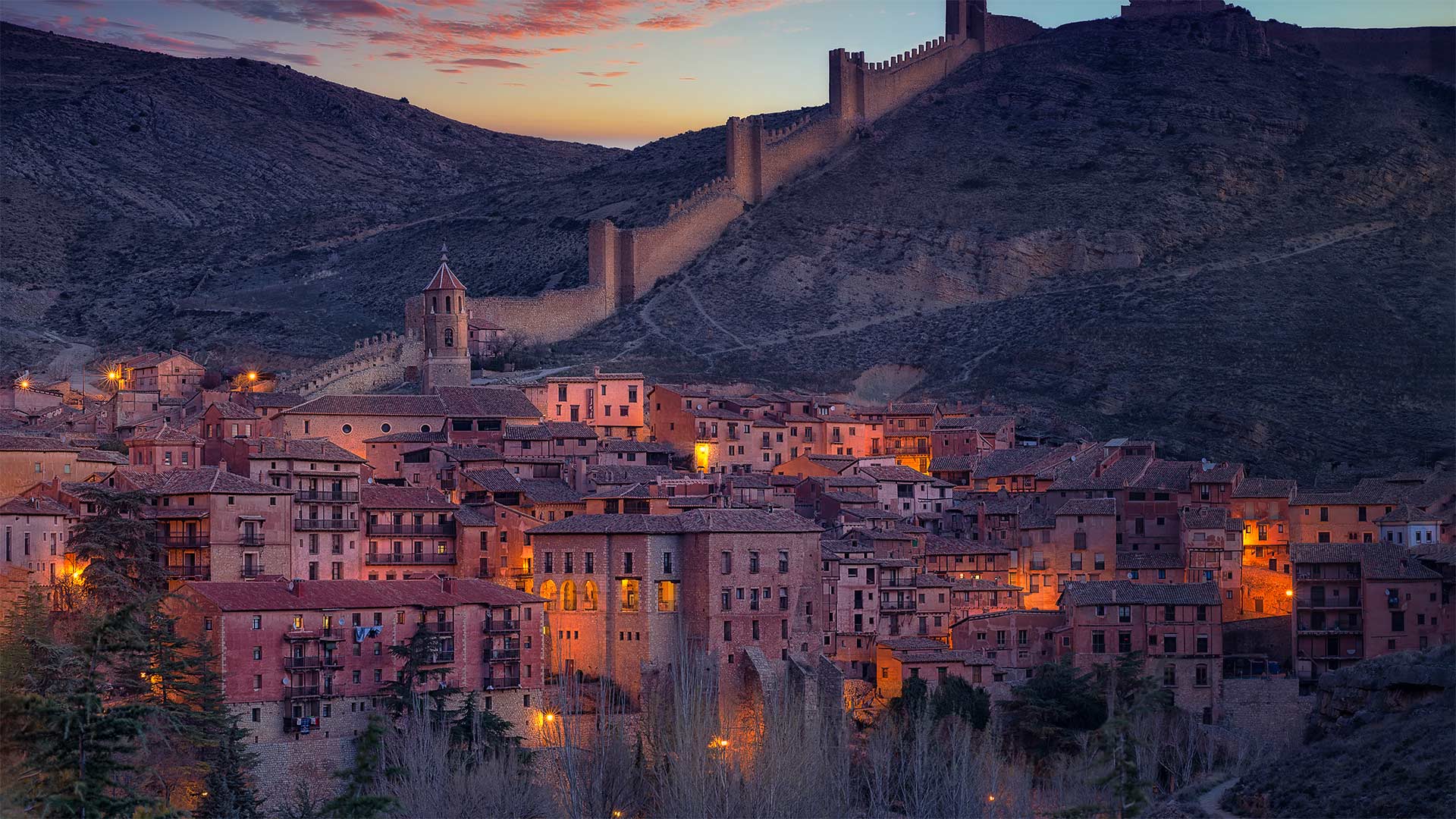
阿尔瓦拉辛,西班牙 Albarracín, Spain (© Domingo Leiva/Getty Images)
A medieval Moorish gem
Originally founded as the capitol of a small Moorish kingdom in the 10th century, Albarracín remains one the most perfectly preserved medieval towns in Spain. The town's narrow winding streets, centuries-old architecture, and dramatic defensive walls are all constructed with the pink-hued gypsum found throughout the region. Aside from its historical charms, Albarracín is also a popular destination for rock climbers who come to scale the red boulders and cliff faces outside the village's fortress walls.
洛阿雷城堡,西班牙韦斯卡 Castle of Loarre, in Hoya de Huesca, Aragon, Spain (© Sebastian Wasek/Alamy)
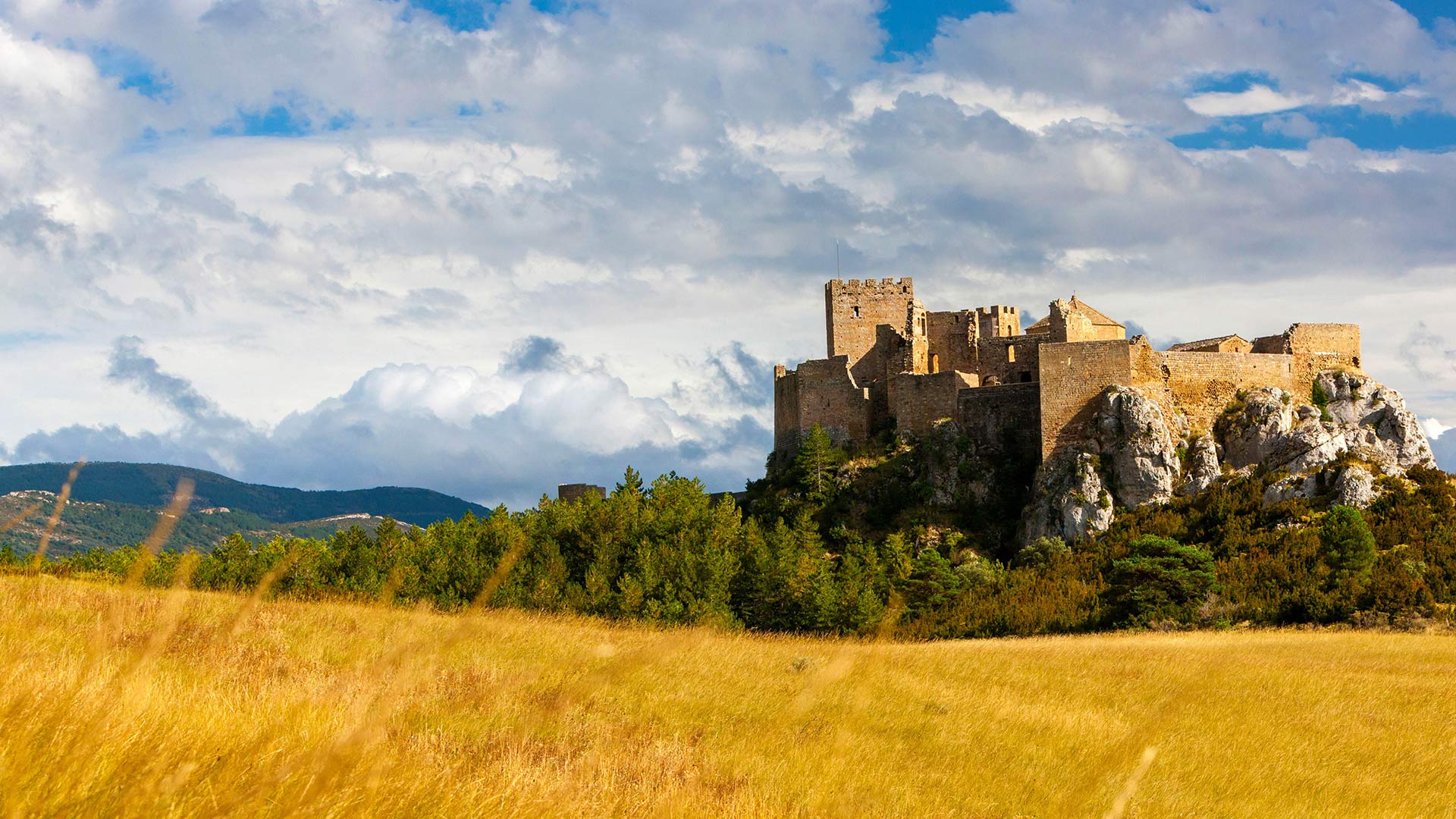
洛阿雷城堡,西班牙韦斯卡 Castle of Loarre, in Hoya de Huesca, Aragon, Spain (© Sebastian Wasek/Alamy)
Floating in time
The castle of Loarre we show you today is a Romanesque jewel that has remained suspended in time for almost a thousand years near the Spanish side of Pyrenees mountain range. It was built by king of Navarre Sancho ‘the Great’ in the 11th century and there’s no other equal or better preserved fortress of that style in all of Europe.
Once finished, in 1070, it became an unbreakable bastion that played a crucial role in the “Reconquest” of the Aragonese territories occupied during the Arab invasion three centuries before, since it was in the battle frontline and mounted on a rocky hill that made it impregnable. From there Sancho’s grandson troops took back the city of Huesca and managed to advance near Zaragoza. And once the battleground had moved further in the south, the castle became a monastery, was expanded two times and surrounded finally by an outer wall to protect the population settled at its feet.
Today, Loarre is a protected national monument that can also be visited. And actually 100,000 people do it every year. If you like epic cinema, you will surely recognize this place, as it has served as stage in several films, like for instance 2005’s “Kingdom of Heaven” directed by Ridley Scott.
阳光穿透加拉霍奈国家公园中的森林,西班牙戈梅拉岛 Sunlight piercing a forest in Garajonay National Park, La Gomera, Spain (© Martin Siepmann/Westend61/Offset by Shutterstock)
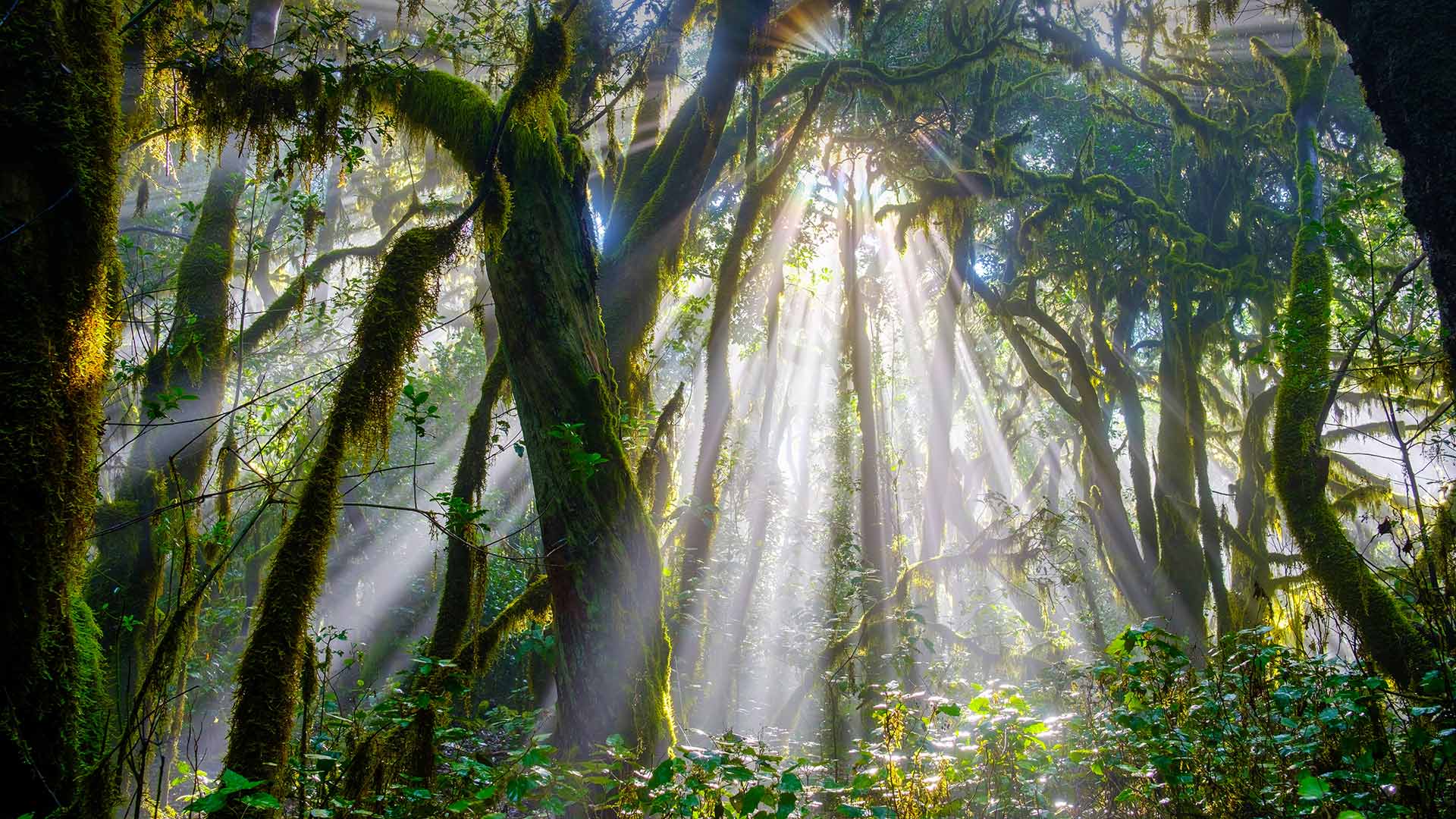
阳光穿透加拉霍奈国家公园中的森林,西班牙戈梅拉岛 Sunlight piercing a forest in Garajonay National Park, La Gomera, Spain (© Martin Siepmann/Westend61/Offset by Shutterstock)
20 million years ago…
Let’s go back 20 million years ago. The forest that you see in our image today and that looks like a tropical jungle is one of the oldest in Europe. It is located in Garajonay National Park, on the Canary Island of La Gomera, Spain. And it represents the best example that exists in the Old World of the Cenozoic flora that once covered all the Mediterranean basin.
This is a laurissilva or laurel forest. And if it has survived to our days, it is because of the special conditions of temperature and humidity of this fascinating volcanic island, where the mist tangles around the trees covered by lichens and ferns, creating a dreamlike atmosphere that seems to be taken from a fairies tale. In fact, the name Garajonay comes from a popular legend that also names the highest peak in La Gomera, “Alto de Garajonay”, which is almost 1,500 meters high.
鸟瞰兰萨罗特岛的La Geria葡萄园,西班牙加那利群岛 Aerial view of La Geria vineyards, Lanzarote, Canary Islands, Spain (© Orbon Alija/Getty Images)
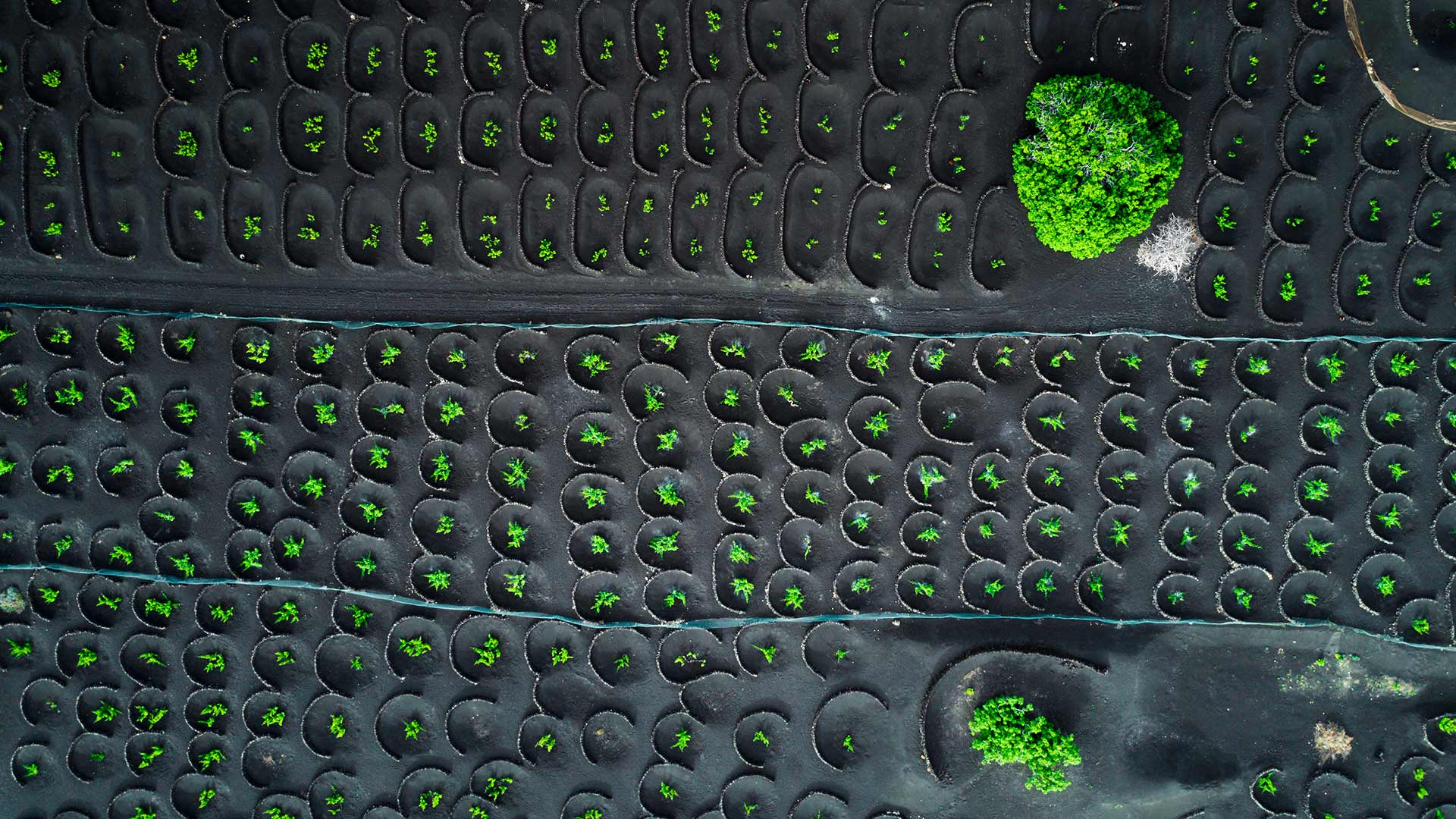
鸟瞰兰萨罗特岛的La Geria葡萄园,西班牙加那利群岛 Aerial view of La Geria vineyards, Lanzarote, Canary Islands, Spain (© Orbon Alija/Getty Images)
Volcanic vineyards
What you can see today in our picture is a bird view of La Geria vineyards, in the Canary island of Lanzarote. They have been there since 18th century and are cultivated following a very special technique, because the vines are planted under the volcanic lapilli, a blanket of ash about two and a half meters thick that covers the land since Timanfaya volcano erupted in 1730 transforming the landscape forever.
To reach the fertile soil, farmers first dig a cone-shaped hole and then build a small stone wall to protect the vines from the trade winds. And since the volcanic ash on the surface prevents rainwater evaporation and captures environmental moisture, plants do not even need added watering.
The variety the most cultivated in this place is volcanic Malvasia, a very special and also very delicate white grape allowing both dry and sweet wines. Due to its unique characteristics, La Geria has also been a protected area since 1987, just as the neighbour Timanfaya National Park, where you can see up to 25 volcanoes concentrated in 51 square kilometers.
